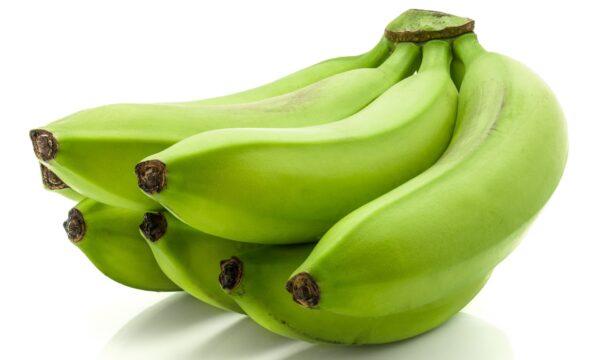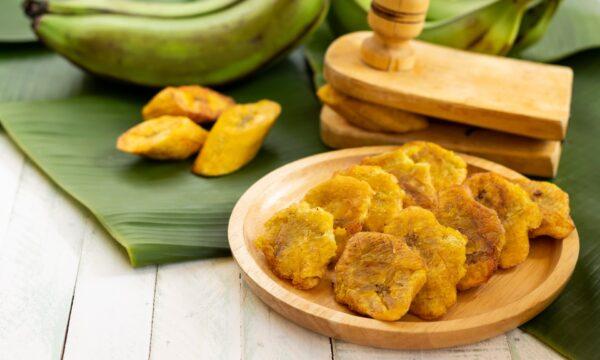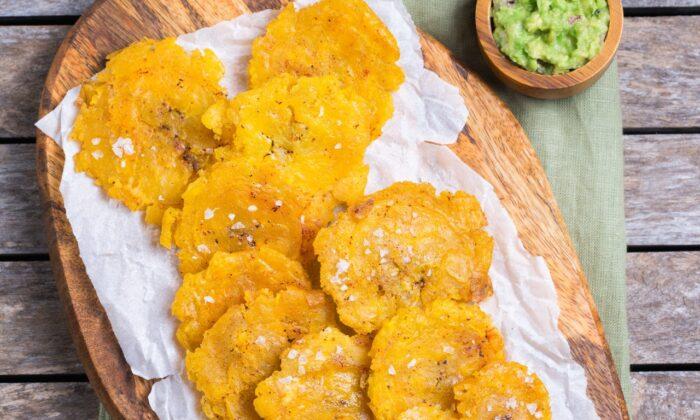The plantain is a staple in Latin American cuisine. Sometimes referred to as the macho banana, it’s a member of the banana family, but quite different from the ubiquitous sweet yellow Cavendish most common in North American grocery stores. (Fun fact: There are more than 1,000 varieties of bananas.) Besides tending to be bigger, the plantain has a thicker skin and starchier, firmer, and less sweet flesh. But it all depends on how and when you cook it.

They can be almost dessert-like when fully ripe (maduro) and caramelized in slices in a frying pan. For example, plátanos maduros are a common breakfast side in Guatemala.
But when they are still quite green (plátanos verdes), they function more like a starchy potato, and throughout the Caribbean and Latin America, they are prepared similarly: fried.
The resulting pieces, resembling medallions, often come alongside a main dish in the same way French fries do. They are called patacones in places such as Venezuela, Colombia, Costa Rica, and Peru. I learned to make them while living in Panama. But throughout the Caribbean, they are called tostones.
A Smashing Side Dish
However you refer to them, they are delicious and easy to make. Much as with good homemade French fries, you need to cook tostones twice.First, however, you’ll need to remove the thick peel, by carefully slicing only the skin with a knife along the length of the plantain, then peeling it off. This is sometimes tricky for me, as the green fruit does not always want to give up its skin. A suggestion is to start at the next step—cutting the plantain crossways into 1-inch pieces—and then slice and peel the skin off of each smaller piece.
These 1-inch chunks make the first trip into the fry oil. The second time into the oil, the plantain pieces need to be smashed first. A typical Caribbean kitchen likely has a tostonera, a tool comprised of two flat pieces of wood or plastic connected by a hinge. This is used to flatten the tostones into their final medallion shape.

However, you can get creative with what’s at hand. I’ve used the bottom of shaker pint glass on a cutting board. I’ve seen someone use a coffee mug. In Panama, I had a small wooden sort of hand mallet that also did the trick. The key is to have two hard surfaces and apply even pressure to flatten the tostones into discs. When all the coins are all thusly minted, take them back to the fryer or a frying pan and fry them again until golden on both sides.
Tostones (Fried Plantain Medallions)
Makes 4 servings- 2 green plantains
- Oil, for frying
- Salt to taste
Pour fry oil into a deep pan to just past the one-inch level. Heat it to medium, but not so hot that it smokes. Working in batches if needed, use metal tongs to carefully place the plantain pieces into the oil. (Don’t splash.) Fry them until they are golden, then remove and lay them on a paper towel-lined plate to drain and cool.
When cool enough to handle, transfer the pieces to a cutting board or tostonera and flatten them evenly into medallions about 1/4-inch thick. Return the flattened pieces to the pan and fry again until golden on both sides. Remove, drain, salt, and serve hot.





